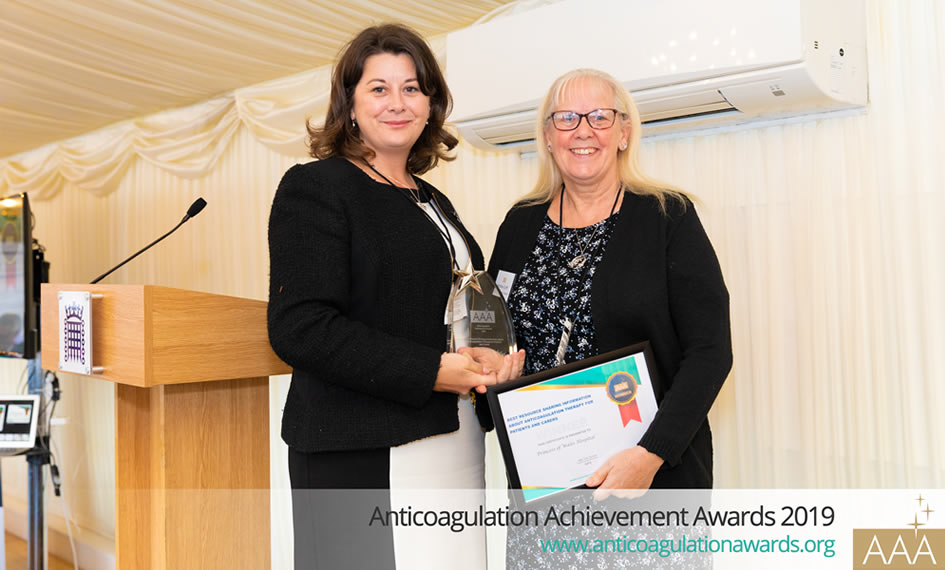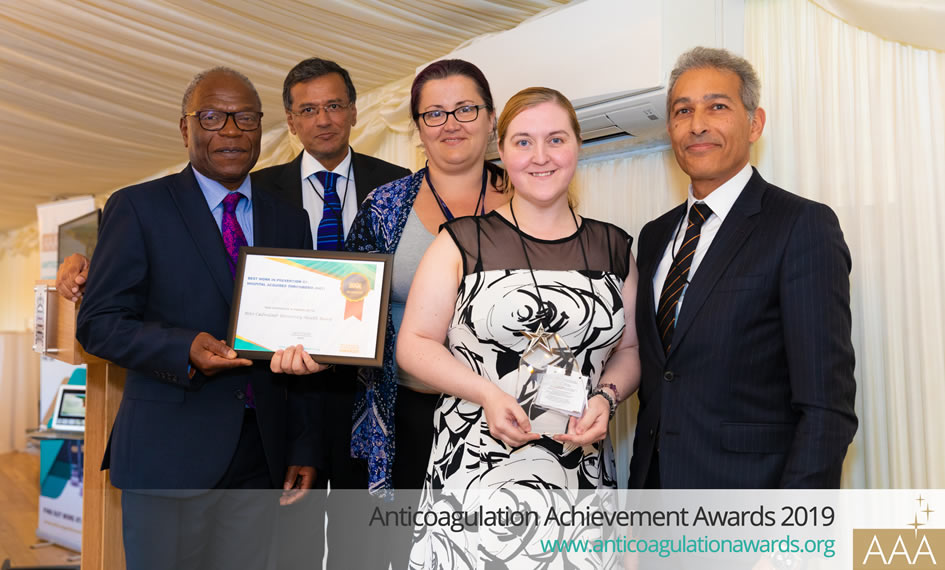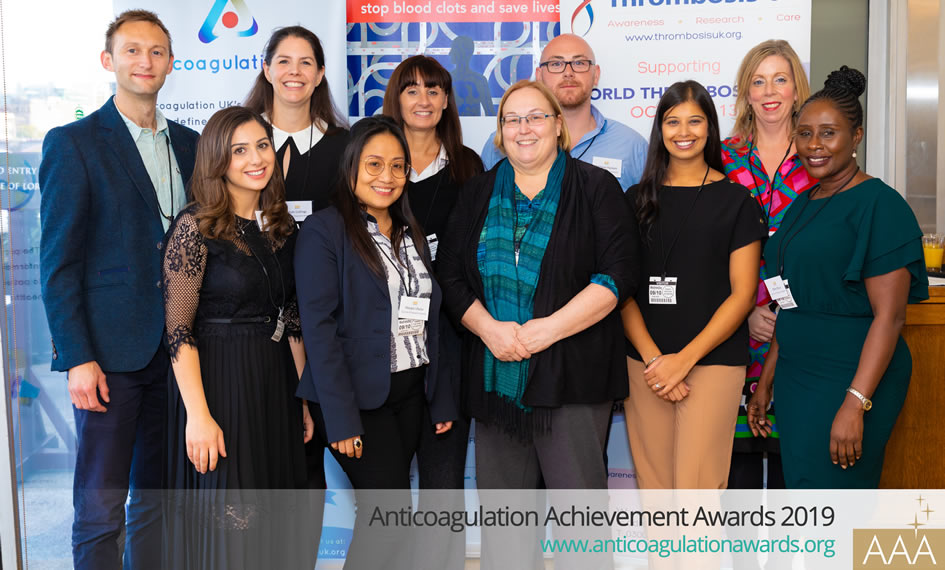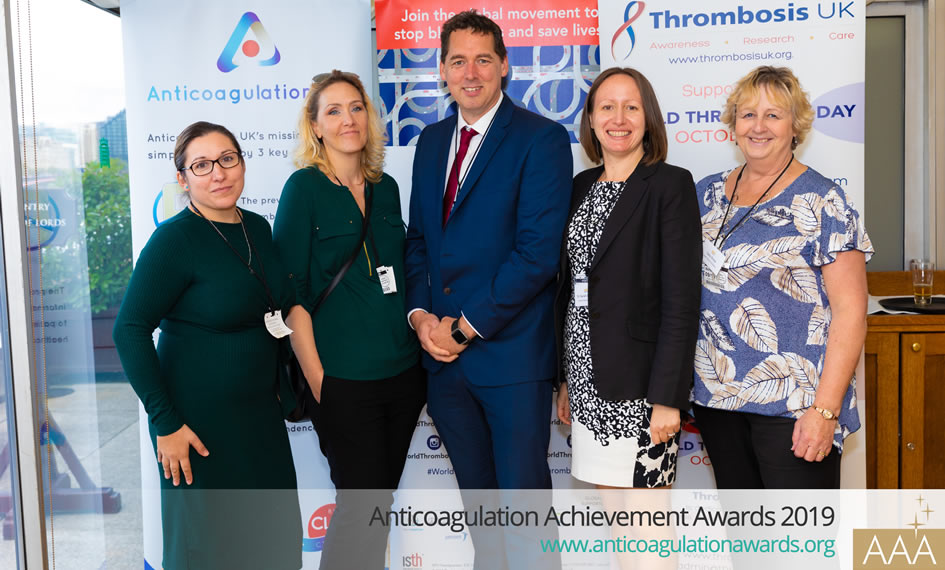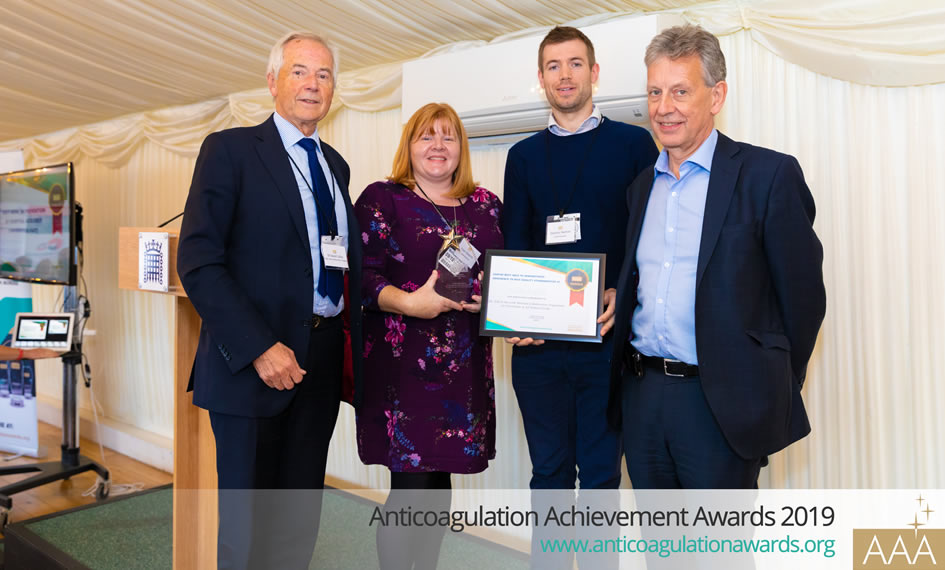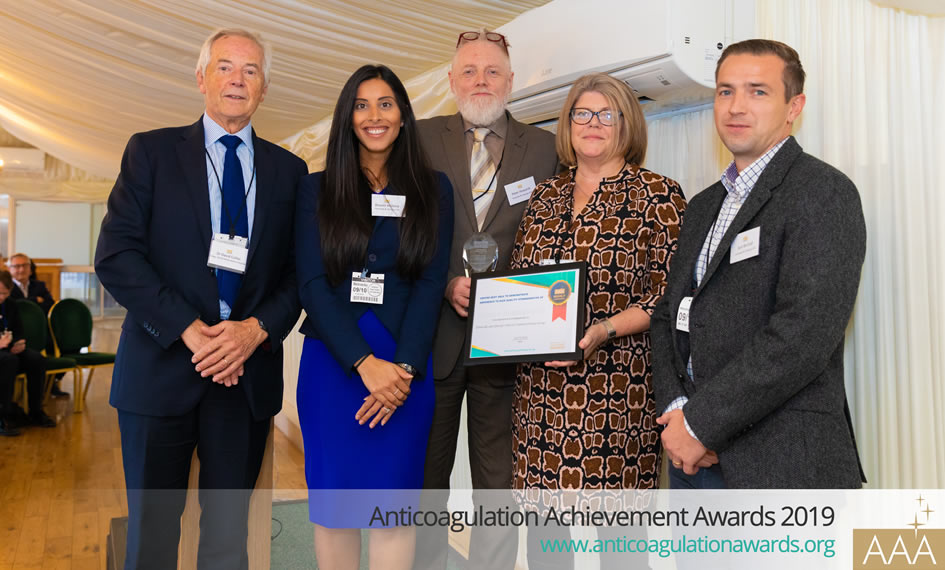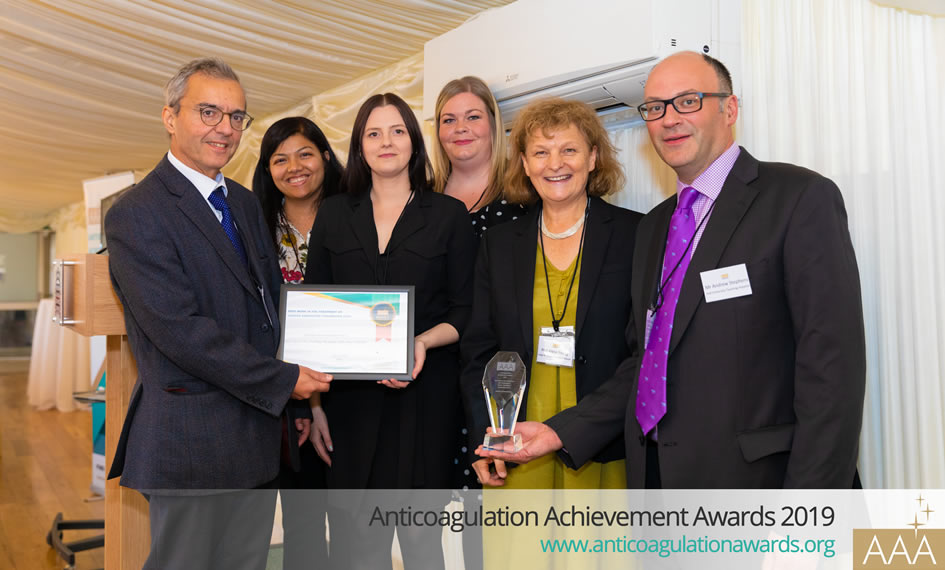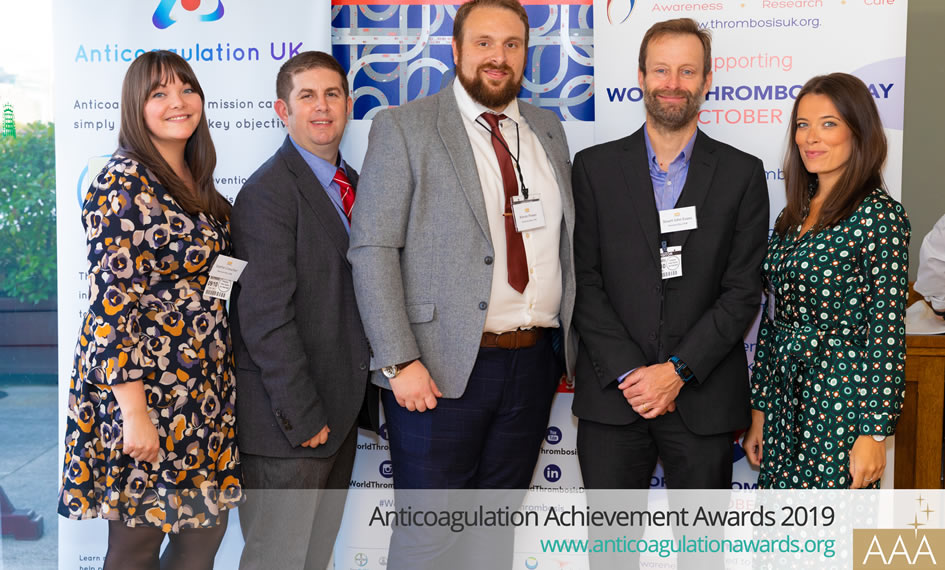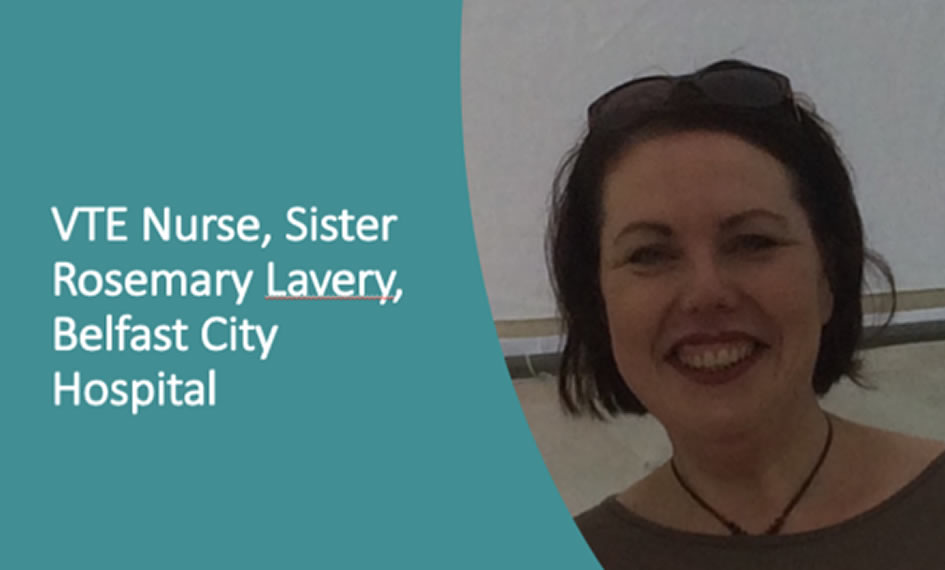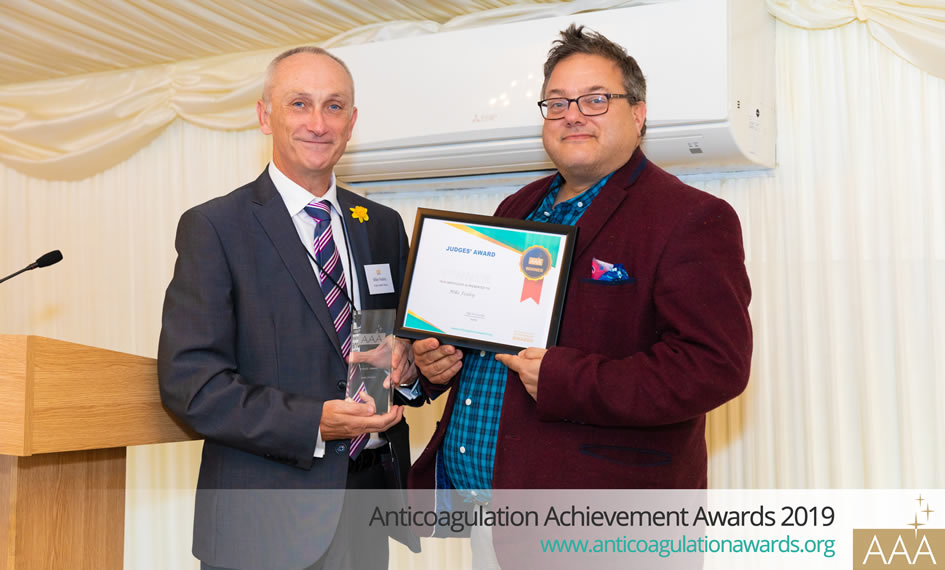Best Resource Sharing Information about Anticoagulation Therapy for Patients and Carers
- presented by Nurse Consultant, Joanne Loades
Patients undertaking warfarin therapy require appropriate pre – operative management to prevent excessive bleeding during and after elective surgery. Some patients are at higher risk of developing a blood clot or stroke if their warfarin treatment is stopped for too long or not restarted after surgery.
These specific patients need reassurance and the confidence that their anticoagulation therapy will be managed effectively to protect them from unnecessary bleeding and preventing blood clots.
This year, the Award is presented to a team who in 2012 introduced a new bridging guideline in the Surgical and Orthopaedic Pre –Assessment clinics in the Princess of Wales Hospital following a number of safety incidents which highlighted there was a lack of guidance and poor communication: consequences of patient not being restarted on warfarin when surgery was cancelled and, operations being cancelled as the patient’s INR levels were not safe for surgery.
The team set out to develop a Warfarin bridging therapy service which would:
- reduce further incidents
- make patients feel safer and less anxious about the whole process
- have patients admitted on the day of surgery so length of stay is reduced
- help clinicians and nurses feel more confident in caring for these patients
The dedicated bridging service pathway was established by the Anticoagulation Advance nurse Practitioner whose patients are counselled prior to surgery with a bridging form placed in the patient's case notes for the benefit of the surgical team when preparing pre and post - operative bridging therapy for the individual patient. A patient letter was designed to give advice and information regarding the bridging therapy process.
The success of the introduction and subsequent evolution of the guidelines is impressive.
- In 2011, only 33% of elective patients taking warfarin were admitted on the day of surgery
- Between 2012 and 2014, 90% of elective patients requiring bridging therapy were admitted on the day of surgery
- In 2018 – 100% of elective surgery patients were admitted on the day of surgery
Positive outcomes can be seen from every perspective.
- Patients benefit by alleviating their fears when it comes to stopping their treatment, guiding them through the pre and post op anticoagulation management and reassurance their surgical team are fully appraised of what bridging has been provided and how they will be managed post-surgery
- Surgeons are not frustrated with not being able to operate when patients are not within their INR ranges pre-surgery
- Hospital beds are not being over occupied by warfarin patients awaiting surgery days before the event and GPs are confident that their patient is managed effectively and returned back to them to resume INR monitoring when safe to do so
Close





